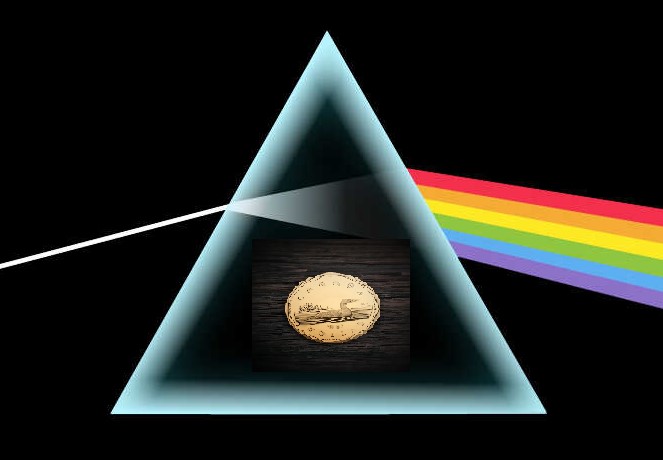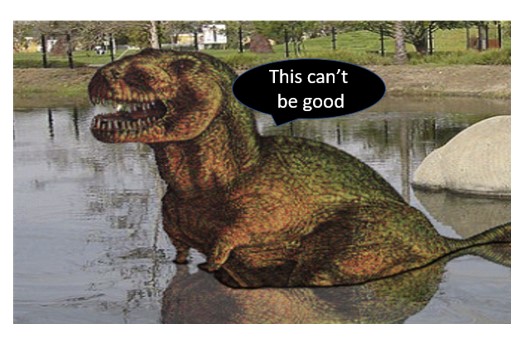
Photo: Pink Floyd/Capital Records 1973
By Michael O’Neill
Things are looking up for the Canadian dollar. At least that seems to be the case as March fades into April.
USDCAD is on the verge of fully retracing all its March 2023 gains, thanks to a wave of broad US dollar weakness and month-end portfolio rebalancing flows. The bulk of the greenback’s weakness stems from an unwinding of safe-haven US dollar buying following the Silicon Valley Bank implosion and a repricing of the US interest rate path.
USDCAD bears are excited about the prospect of China leading a global economic rebound and by hopes that the Fed puts the brakes to rate hikes at the May 3 FOMC meeting before announcing first rate cut at the end of July.
If so, USDCAD becomes less attractive to investors as the yield differential narrows or disappears.
The Federal government is doing its part to ensure Canada can compete globally. At least that is how Finance Minister Chrystia Freeland is trying to sell $67.0 billion in new spending unveiled in the March 28 budget.
There is no doubt that this budget will pass. The minority Liberal government is planning to stay in power until 2025 by spending $13 billion over five years for a national dental plan. It is the price NDP leader Jagmeet” when I’m Prime Minister” Singh requested for his unwavering Liberal party support.
Nevertheless, the latest Federal budget has been met with a collective “Meh” from major Canadian bank economists. Some ask where the fiscal anchors went, while others complain that “new” initiatives are just repackaged, previously-announced spending plans.
Ms Freeland played “fun with figures,” claiming the budget deficit fell from $43.0 billion last year to $40.1 billion this year. It’s true, but in her Fall Economic Statement last November, she claimed the budget deficit was $36.4.
The Liberal Government is intensely focused on green energy and promised $31.0 billion of refundable investment tax credits of green manufacturing and clean energy.
And therein lies the dark side of the loon.
Canadian government energy policies are economic suicide, the equivalent of Tyrannosaurus Rex falling into a tar pit.

Canada is home to the world’s third largest proven oil reserves. The US Energy Information Administration, BP, and the Central Intelligence Agency estimate Canadian’s are sitting on 172.5 billion barrels of crude. Only Venezuela and Saudi Arabia have more.
This is equivalent to $12.77 trillion US dollars at a West Texas Intermediate price of $74.00/barrel. In other words, it’s worth $333,856.21 for every Canadian, a far more than the current per capital debt of $32,954.
That kind of revenue could be used to improve healthcare services, address the mental health crisis, reduce poverty, and improve education. In addition, they would have the resources to develop a plan to transition to a greener energy plan without crippling the economy.
But the powers that be do not want that to happen.
They believe that Canada must be at the forefront of the climate change debate, even though climate change itself is a multifaceted and complex issue.
Climate change activists blame human activities such as burning fossil fuels, deforestation, and industrial processes for releasing greenhouse gases into the atmosphere. These gases trap heat and cause the earth’s temperature to rise.
The climate change advocates claim the evidence is clear, citing rising sea levels, more frequent and severe weather events like hurricanes, tornados, droughts, along with melting glaciers and ice caps.
Sceptics suggest those conclusions may be exaggerated, due to a lack of verifiable and quantifiable data. The earth is estimated to be 4.5 billion years old and there are few if any written records older than nine hundred years.
Canada is the 10th largest greenhouse gas emitter by total emissions according to the Global Carbon Project, but only 38th by population. Arguably, Canada’s climate change activities will not even cause a ripple in lowering greenhouse gas emissions until mega-polluters like China, India, Russia, step up to the plate. Don’t hold your breath.
But that doesn’t stop virtue-signaling politicians who are more concerned with photo-ops, social media likes, and rubbing elbows in Davos with celebrities and the global elite.
For Canadians, the climate change initiatives border on the criminal. Never, in the history of the world, has a country embraced the systemic destruction of its national wealth so whole-heartedly.
The federal government is now touting a “Sustainable Jobs Plan.” It sounds terrific.
The preamble says “Workers are at the heart of Canada’s prosperity. It is workers who have built up the industries that create wealth in every region of this country.” It goes on to say that “With a highly skilled workforce, abundant access to the natural resources and energy sources, and a thriving clean technology industry, Canada is uniquely positioned to seize the moment.”
Then it delivers the sucker punch. It describes a Sustainable Job as one that is compatible with “net-zero emissions.” Bye bye oil patch, hello Starbucks.
This isn’t a good environment for the Canadian dollar. It’s hard to see investors flocking to a country with ever increasing government deficits, a shrinking manufacturing capability and a resource base that the government doesn’t want.
Clearly, this is the Dark side of the Loon.





